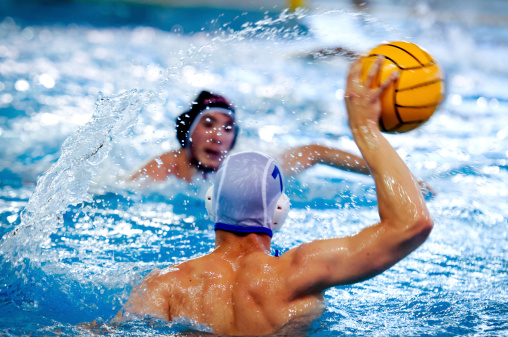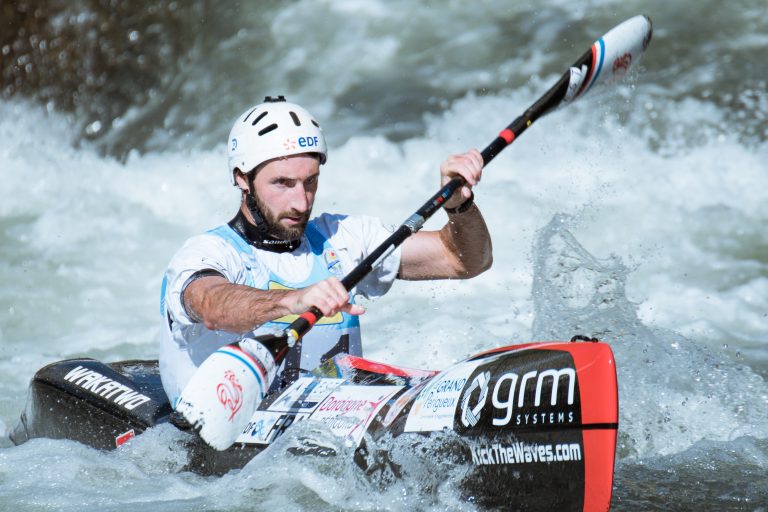General Rules of Freediving
You'll need to follow fundamental principles to guarantee a safe and enjoyable freediving experience. Understand your physical limits, master breathing and relaxation techniques, and follow established safety protocols. Always dive with a buddy and prioritize respecting marine life. You'll also need to check your equipment, plan your dive, and manage your depth and time to avoid shallow water blackout. With these general rules, you'll be well on your way to a successful and enjoyable freedive. As you continue, you'll discover the intricacies of these principles and how they come together to create a rewarding experience.
Understanding Your Physical Limits
As you prepare to freedive, it's important that you understand your physical limits, since they'll determine how deep and how long you can safely dive. Your physical boundaries will define the extent of your freediving experience, so it's essential to acknowledge and respect them. Genetic predispositions, such as lung capacity and body composition, play a significant role in determining your physical limits. For instance, if you have a smaller lung capacity, you may not be able to hold your breath for as long as someone with a larger lung capacity. Understanding your physical limits will help you set realistic goals and avoid pushing yourself too far, which is vital for safe and enjoyable freediving. Recognizing your limitations will also allow you to focus on developing skills and techniques that cater to your strengths, making you a more confident and competent freediver. By acknowledging and working within your physical boundaries, you'll be able to explore the underwater world with confidence and freedom.
Breathing and Relaxation Techniques
When getting ready for a freedive, it is crucial to concentrate on your breathing and relaxation techniques to enhance your experience. Mastering diaphragmatic breathing is key, as it will assist you in conserving energy and extending your bottom time. By soothing your nervous system and reducing your heart rate, you will be able to unwind and fully enjoy your underwater adventure.
Diaphragmatic Breathing Techniques
You'll find that mastering diaphragmatic breathing techniques is essential to freediving, as they help slow down your heart rate and conserve oxygen. By incorporating these techniques into your freediving practice, you'll be able to dive deeper and longer, while also reducing your risk of injury or exhaustion.
To master diaphragmatic breathing, focus on the following key elements:
- Breathing Rhythms: Practice slow, rhythmic breathing to calm your nervous system and slow down your heart rate. Aim for 3-5 breaths per minute to enter a state of relaxation.
- Lung Expansion: Focus on expanding your lungs fully, using your diaphragm to inflate your lungs rather than shallowly filling your chest. This will help increase oxygenation and reduce fatigue.
- Relaxed Shoulders: Keep your shoulders relaxed and down, avoiding any tension that can impede your breathing and increase stress.
Calming the Nervous System
In the minutes leading up to your dive, it's crucial that you calm your nervous system, and that process begins with conscious breathing and relaxation techniques. As you prepare to descend into the depths, your body's natural response is to tense up, but you can override this instinct by focusing on your breath.
| Breathing Technique | Physical Response | Mental State |
|---|---|---|
| Diaphragmatic Breathing | Relaxed Shoulders, Calm Heart Rate | Focused, Present |
| Box Breathing | Slowed Heart Rate, Lowered Blood Pressure | Calm, Centered |
| 4-7-8 Breathing | Decreased Stress Hormones, Relaxed Muscles | Relaxed, Peaceful |
| Equal Breathing | Balanced Nervous System, Clear Mind | Focused, Mindful |
Buddy System and Safety Procedures
Frequently, freedivers dive with a buddy, which is an essential safety measure that greatly reduces the risk of accidents and fatalities. When you dive with a buddy, you'll have someone to monitor your dive and provide assistance if needed. This buddy system is a critical aspect of freediving safety protocols.
As you prepare for your dive, make sure you and your buddy have a clear understanding of the safety procedures in place. This includes:
- Establishing a meeting point in case of separation
- Agreeing on a maximum dive time and depth
- Having a plan in place for emergency situations, such as a diver blackout or injury
Dive Planning and Site Selection
As you prepare for your next freediving adventure, you'll need to carefully plan and select a site that suits your skills and goals. This involves evaluating the site's conditions, identifying potential risks, and developing a solid plan to mitigate them. By doing so, you'll be able to minimize hazards and guarantee a safe and enjoyable experience.
Dive Site Assessment
You'll need to carefully assess a potential dive site's conditions, including water temperature, visibility, currents, and marine life, to guarantee a safe and enjoyable freedive. This assessment is essential in ensuring your dive plan is tailored to the site's unique characteristics.
When evaluating a dive site, consider the following key factors:
- Water Conditions: Assess the water temperature, clarity, and any potential hazards like strong currents or rip tides. This will help you determine the best time to dive and what gear to bring.
- Marine Life: Be aware of the local marine life, including any potential hazards like sharks, jellyfish, or sea snakes. This knowledge will help you avoid interactions that could put you or the marine life at risk.
- Site-Specific Hazards: Identify any site-specific hazards like underwater caverns, wreckages, or other obstacles that could pose a risk to your safety.
Risk Management Strategies
By understanding the site's conditions, you're now ready to develop a solid risk management strategy, which involves careful dive planning and site selection to minimize potential hazards. This is where you get to be proactive and take control of your dive. Start by conducting a thorough risk assessment, identifying potential hazards, and evaluating the likelihood of accidents. This will help you prioritize and mitigate risks, ensuring a safer dive.
Next, envision yourself exploring the dive site, anticipating potential challenges, and rehearsing your response. This mental rehearsal will help you stay focused and composed, even in high-pressure situations. Remember, a well-planned dive is a safe dive. By selecting a site that aligns with your skills and experience, you'll be able to manage risks more effectively. Take the time to research the site, considering factors like water conditions, marine life, and access to emergency services. By doing so, you'll be well-prepared to handle any situation that arises, and enjoy a more liberated and fulfilling freediving experience.
Dive Plan Development
Developing a solid dive plan involves selecting a site that aligns with your skills and experience, then meticulously planning every detail to ensure a safe and successful freedive. As you start on this journey, you'll want to define your dive objectives, ensuring they're realistic and achievable. This will help you stay focused and motivated throughout the dive.
To create a detailed dive plan, consider the following essential elements:
- Define your dive schedule: Establish a realistic timeline for your dive, including the time of day, duration, and any necessary intervals.
- Conduct thorough site research: Gather information about the location, including water conditions, marine life, and potential hazards.
- Establish a communication plan: Designate a meeting point and establish a system for communicating with your buddy or team during the dive.
Equipment Checks and Maintenance
Before every dive, it's important that you inspect your freediving equipment thoroughly to make sure it's in good working order. A Gear Inspection is necessary to guarantee your safety and the success of your dive. Check your mask, snorkel, and fins for any signs of wear and tear. Make sure your wetsuit is in good condition, and your weight belt is secure. Don't forget to inspect your freediving computer, if you're using one, to make sure it's functioning correctly.
Regular Equipment Upgrades are also essential to maintain your gear's performance. Replace any worn-out parts, and consider upgrading to new, more advanced equipment as you gain more experience. A well-maintained set of equipment will not only enhance your diving experience but also reduce the risk of accidents. Remember, your safety is in your hands, so take the time to inspect and maintain your gear regularly. By doing so, you'll be able to dive with confidence and enjoy the freedom that comes with exploring the underwater world.
Equalization and Ear Pressure
Now that you've ensured your equipment is in top condition, it's time to focus on your body's preparation for the dive, starting with the often-overlooked yet essential process of equalizing ear pressure. As you descend, the water pressure increases, and your ears need to adapt to avoid discomfort, injury, or even hearing loss. Understanding ear anatomy is key to effective equalization. The Eustachian tube connects your middle ear to the back of your throat, allowing air to enter and balance the pressure.
To equalize successfully, focus on the following pressure points:
- Valsalva maneuver: Pinch your nose shut, close your mouth, and gently blow air through your nose to open the Eustachian tube.
- Toynbee maneuver: Swallow while pinching your nose shut to open the Eustachian tube and allow air to enter.
- Frenzel maneuver: Pinch your nose shut, close your mouth, and make a 'kah' sound to open the Eustachian tube.
Depth and Dive Time Management
As you plan your dive, you'll need to carefully manage your depth and time to avoid surpassing your body's limits and to guarantee a safe, enjoyable experience. Depth and dive time management is vital in freediving, as it directly affects your safety and overall experience.
To manage your depth, you'll need to use a depth gauge, which will help you track your descent and ascent rates. This is essential in avoiding nitrogen buildup and decompression sickness. Additionally, a dive computer can be a valuable tool in tracking your dive time and alerting you to potential safety issues.
When planning your dive, set realistic goals for yourself based on your training and experience. Don't push yourself beyond what you're capable of, as this can lead to serious consequences. Always prioritize your safety and be willing to abort the dive if you're not feeling comfortable. By managing your depth and dive time effectively, you'll be able to enjoy a safe and exhilarating freediving experience.
Shallow Water Blackout Prevention
To minimize the risk of shallow water blackout, you should always dive with a buddy who can monitor your dive and respond quickly in case of an emergency. This is vital for Water Safety, as shallow water blackout can occur without warning signs. Dive Psychology plays a significant role in preventing shallow water blackout, as it's important to be aware of your mental and physical state before and during the dive.
To guarantee a safe dive, follow these guidelines:
- Relax and breathe: Take slow, deep breaths before your dive to calm your mind and body.
- Monitor your CO2: Keep an eye on your carbon dioxide levels, as high levels can increase the risk of shallow water blackout.
- Stay hydrated: Drink plenty of water before and after your dive to prevent dehydration, which can contribute to shallow water blackout.
Emergency Response and First Aid
As you prepare for the unexpected, it's essential you know how to respond in emergency situations. You'll need to know how to handle shallow water emergencies, manage airway obstruction, and treat near-drowning victims. In the following sections, you'll learn the essential skills to provide effective emergency response and first aid.
Dealing With Shallow Water
When freediving in shallow water, maintaining good buoyancy control and staying vigilant about your surroundings are crucial to minimize the risks of experiencing shallow water blackout, a potentially life-threatening condition that requires immediate emergency response and first aid. This is because shallow water can lead to a false sense of security, causing you to lose control of your buoyancy and dive deeper than intended.
To minimize the risks, it's vital to maintain good buoyancy control and stay vigilant about your surroundings. Here are some key tips to keep in mind:
- Stay calm and focused: Avoid panicking, as this can worsen the situation. Instead, focus on slow, controlled breathing and gradual ascents.
- Monitor your air supply: Keep track of your air levels and make adjustments accordingly. Don't push yourself too hard, and be prepared to surface if needed.
- Watch for warning signs: Be aware of the signs of shallow water blackout, such as dizziness, nausea, or disorientation. If you experience any of these symptoms, prioritize your safety and surface immediately.
Managing Airway Obstruction
If you're unable to breathe due to an airway obstruction, you'll need to act fast to restore airflow, as every second counts in preventing brain damage or even death. Understanding airway anatomy is vital in managing airway obstructions. The trachea, larynx, and bronchi form the respiratory tract, and any blockage in this pathway can be life-threatening.
To remove the obstruction, you'll need to employ obstruction techniques. The first step is to encourage the person to cough forcefully to try and dislodge the object. If this doesn't work, you'll need to use back blows or abdominal thrusts to create pressure and force the object out. For conscious adults, stand behind them and wrap your arms around their waist, making a fist with one hand and grasping it with the other. Perform quick upward thrusts to create pressure. Repeat this process until the object is dislodged. Remember to act quickly and stay calm, as every second counts in restoring airflow.
Treating Near Drowning
What should you do in the critical moments following a near-drowning incident, where every second counts in preventing long-term damage or even death? As a freediver, it's important to know how to respond in an emergency. When treating near-drowning, your priority is to make sure the victim's airway, breathing, and circulation (ABCs) are stable.
To do this, you'll need to assess the victim quickly and accurately. Start by checking for signs of near-drowning, such as:
- Weak or absent breathing
- Confusion or loss of consciousness
- Blue-tinged skin or lips
- Foam around the mouth
Next, perform a victim assessment to determine the severity of the incident. This includes checking the victim's vital signs, such as pulse and breathing rate. If the victim is unconscious, don't delay – call for emergency services immediately. Remember, every second counts in preventing long-term damage or even death.
Respect for the Marine Environment
As a freediver, you're an ambassador for the underwater world, and it's essential that you respect the marine environment by not touching or standing on coral reefs, which are fragile ecosystems that take years to form. These delicate ecosystems are vital for marine conservation, and your actions can make a significant impact. By not touching or standing on coral reefs, you're contributing to sustainable tourism and preserving the beauty of the ocean for future generations.
You should also avoid feeding or disturbing marine life, as this can disrupt the natural balance of the ecosystem. Additionally, be mindful of your buoyancy and avoid stirring up sediment, which can cloud the water and harm marine life. By respecting the marine environment, you're not only protecting the ocean but also ensuring a safe and enjoyable experience for yourself and others. Remember, marine conservation is a collective responsibility, and every small action counts. By being a responsible freediver, you're contributing to a larger movement towards sustainable tourism and preserving the beauty of the ocean.
Frequently Asked Questions
Can I Freedive With a Cold or Sinus Infection?
"Like a fragile vase, your body's delicate balance can shatter with a cold or sinus infection, putting you at risk of Respiratory Risks and debilitating Sinus Pressure, making freediving a hazardous pursuit – it's best to wait until you're fully recovered."
Are There Any Age Restrictions for Learning Freediving?
'As you consider freediving, know that age isn't a barrier; youth development programs cater to kids as young as 8, while elderly considerations prioritize safety for seniors – it's never too early or late to start.'
Can I Freedive While Menstruating or Pregnant?
'As you navigate hormonal changes, prioritize body awareness; while menstruating or pregnant, you'll need to adjust your freediving approach, respecting your body's unique needs to guarantee a safe, empowering experience.'
How Long Does It Take to Become a Certified Freediver?
"Expect a 3-4 day Freediving Timeline to become certified; your Certification Pathway starts with theory, followed by confined and open water sessions, and you'll be freediving like a pro in no time, embracing your newfound liberation!"
Can I Freedive With a Pacemaker or Implantable Device?
'If you have a pacemaker or implantable device, you'll need medical clearance before freediving. Guarantee device safety by consulting your doctor and manufacturer guidelines to avoid potential risks and complications.'






